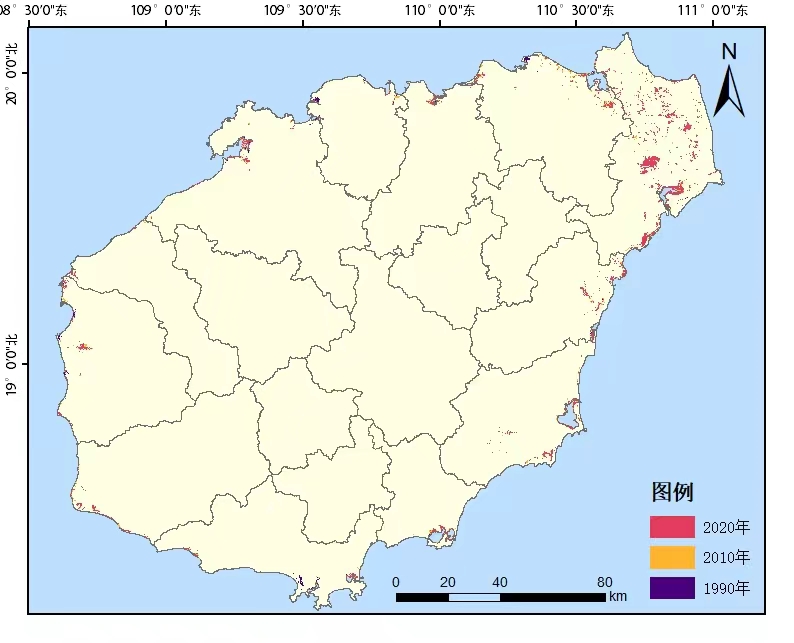Contact Information

The 30-m datasets of aquaculture ponds in Hainan Island from 1990 to 2020

Dataset Overview
The rapid development of aquaculture has caused certain social and environmental problems. Periodically monitoring the distribution and dynamic changes of aquaculture in coastal areas is of great significance for environmental protection. In this study, we used 3 periods ( 1990, 2010, and 2020) of Landsat TM/OLI data in combination with Google Earth images and field research data, so as to obtain a dataset of aquaculture ponds in Hainan Island during 1990-2020. The overall classification accuracy of this dataset is over 95%. It can be used for analysis of temporal and spatial changes in aquaculture ponds, as well as decision-making support for the site selection, management and utilization of aquaculture ponds. It is expected to provide data support for the sustainable development of aquaculture and ecological environment monitoring in Hainan Province.

Dataset Details
Spatial Resolution: 30m
Time Resolution: 5 years
Product Number: XDA19030105_011
Create Institution: International Research Center of Big Data for Sustainable Development Goals
Created By: Zhang Li; Chen Bowei
Creation Date: 2022-12-13T08:50:13.264Z
File Size: 3
Data Format: shape
Type Of Data: Vector
Data Label:

Data Citation
Zhang Li, Chen Bowei. The 30-m datasets of aquaculture ponds in Hainan Island from 1990 to 2020. 2022.

Data Licence Agreement
Users of this product shall clearly indicate the source as " 30-m datasets of aquaculture pond changes in Hainan Island from 1990 to 2020" in all forms of research output, including, but not limited to, published and unpublished papers, theses, manuscripts, books, reports, data products, and other academic output. The data producers are not responsible for any losses caused by the use of the data. The boundaries and marks used in the maps do not represent any official endorsement by or opinion of the data producers.

Funded Projects
Supported by Hainan Provincial Department of Science and Technology under Grant No. ZDKJ2019006 and the "Strategic Priority Research Program" of the Chinese Academy of Science, Grant No. XDA19030105
